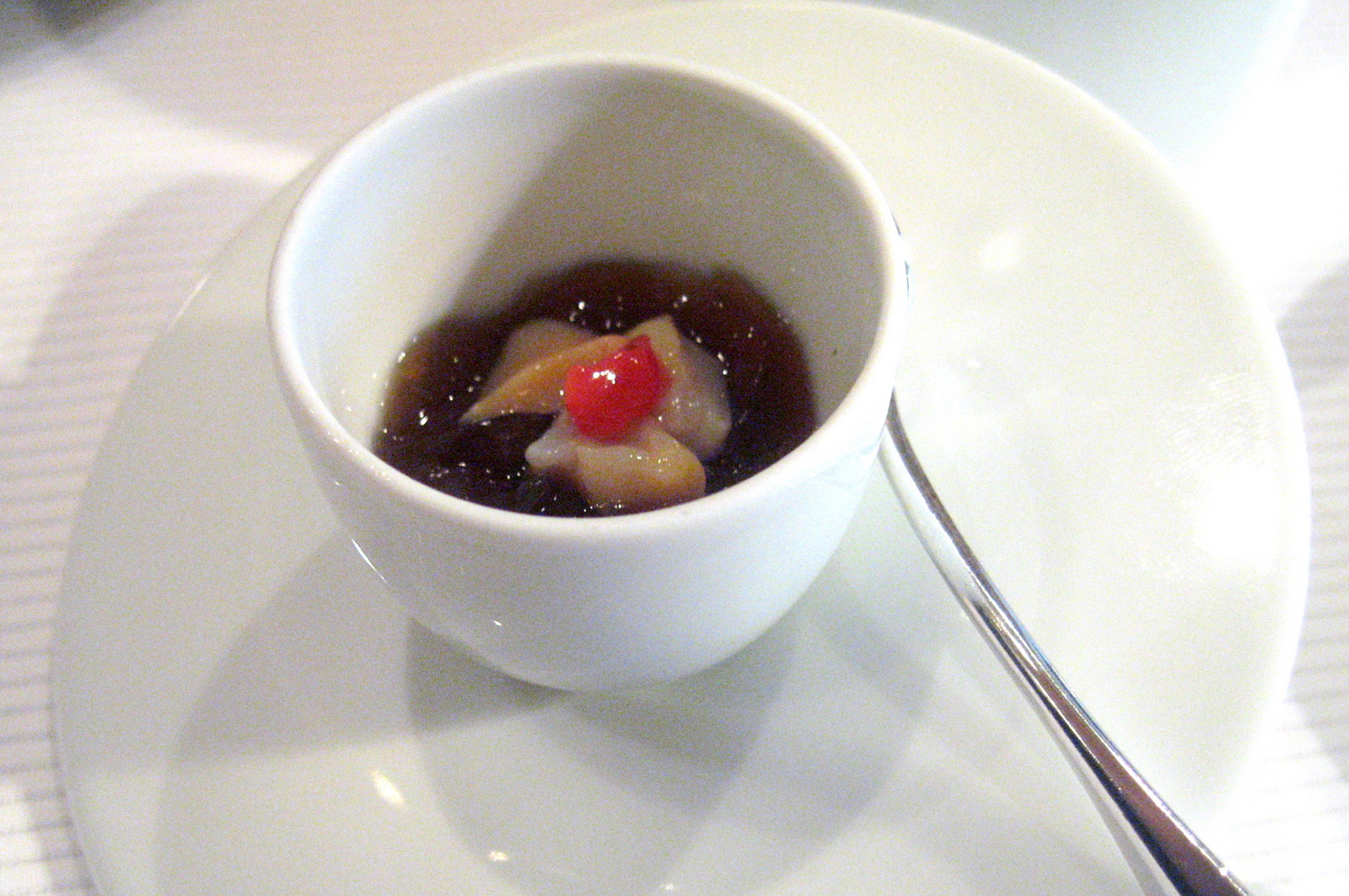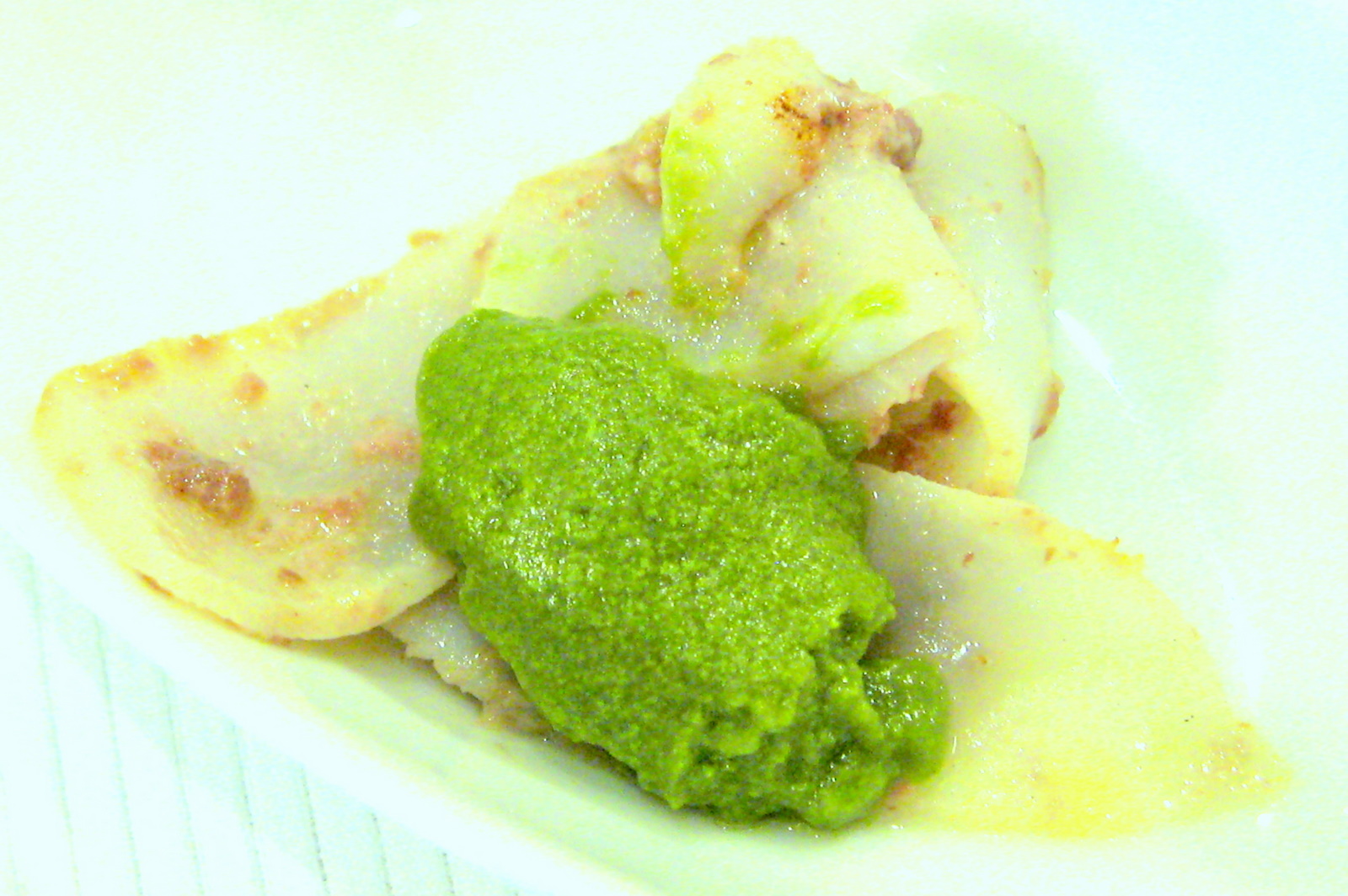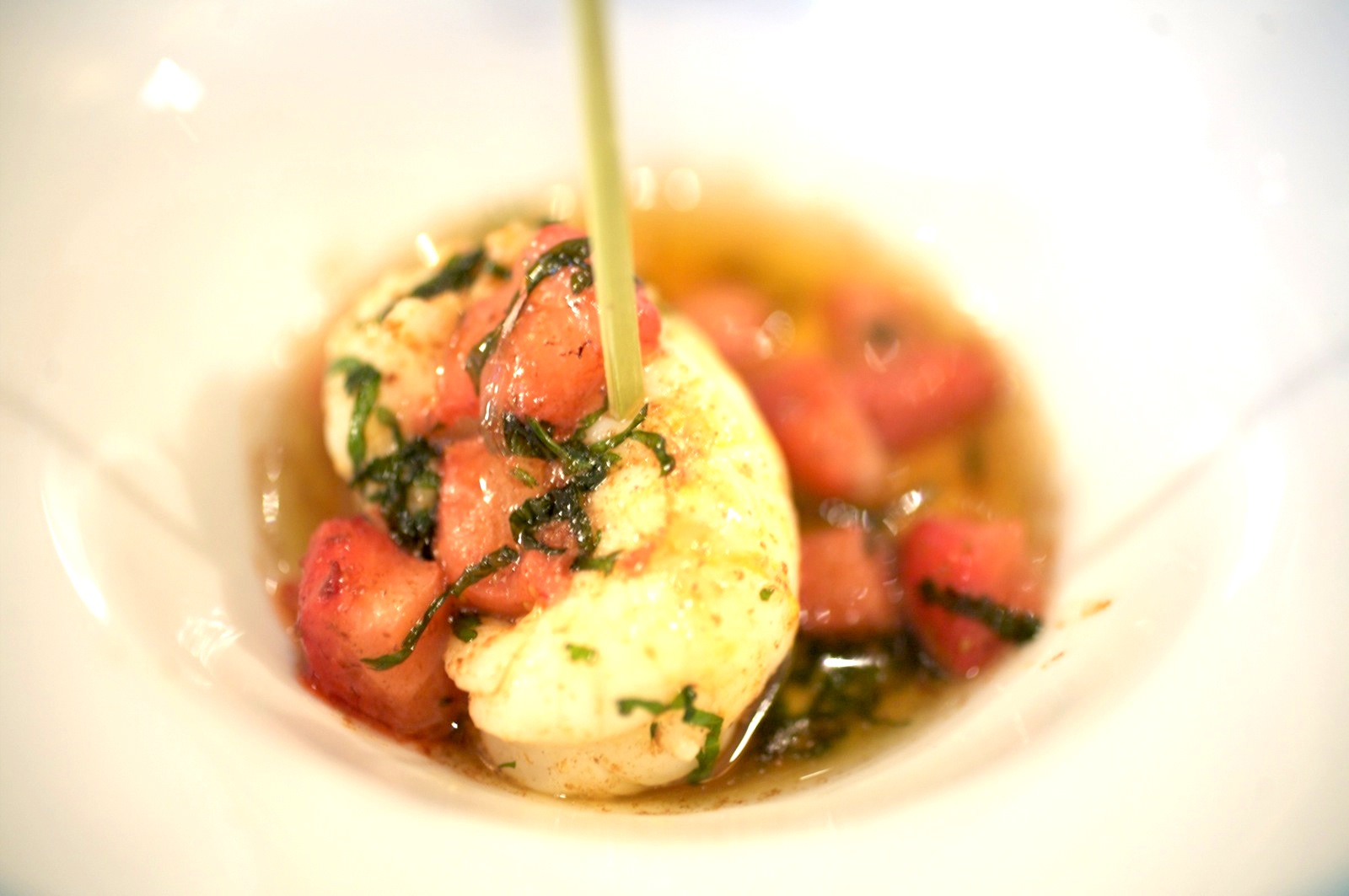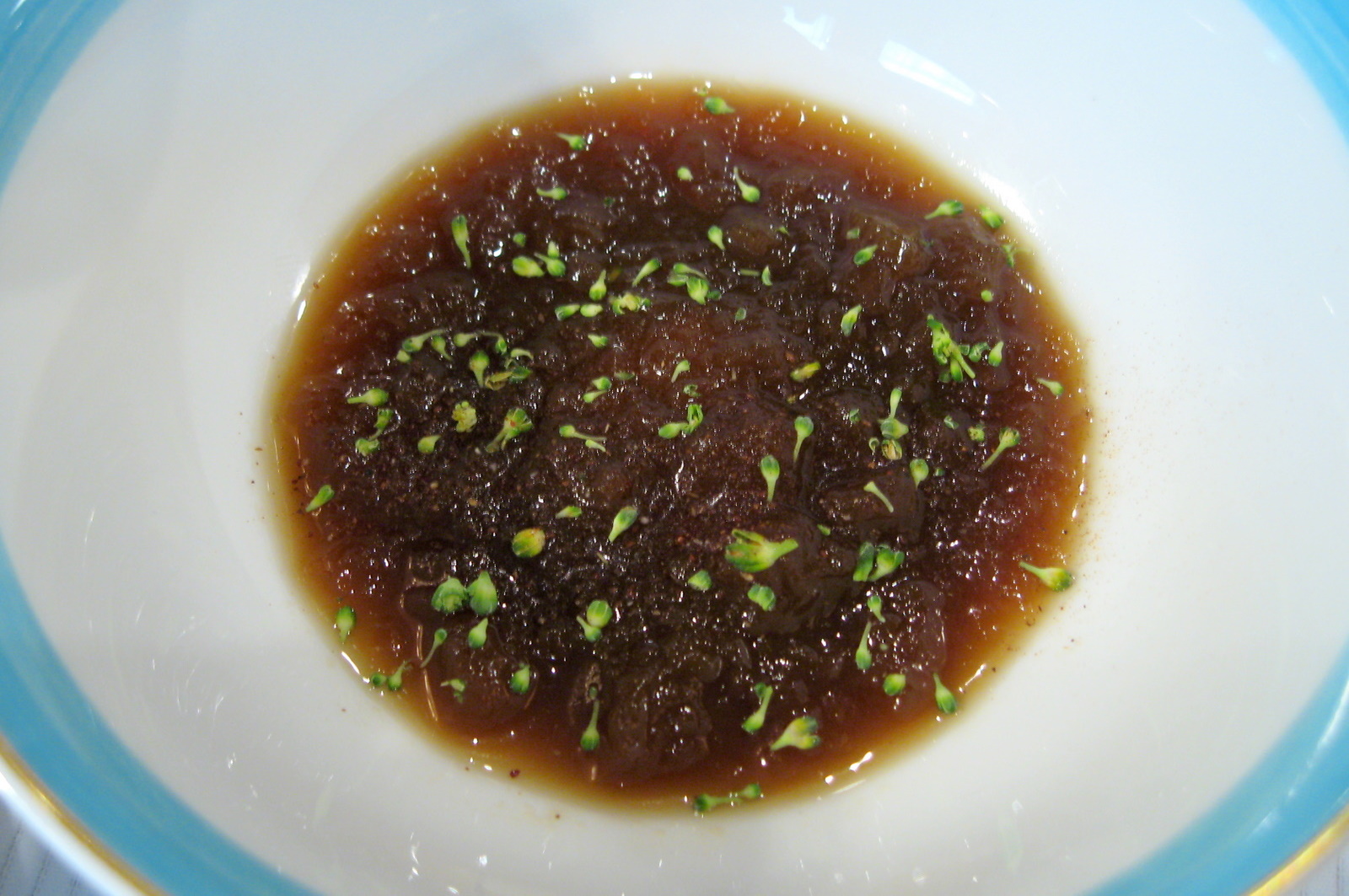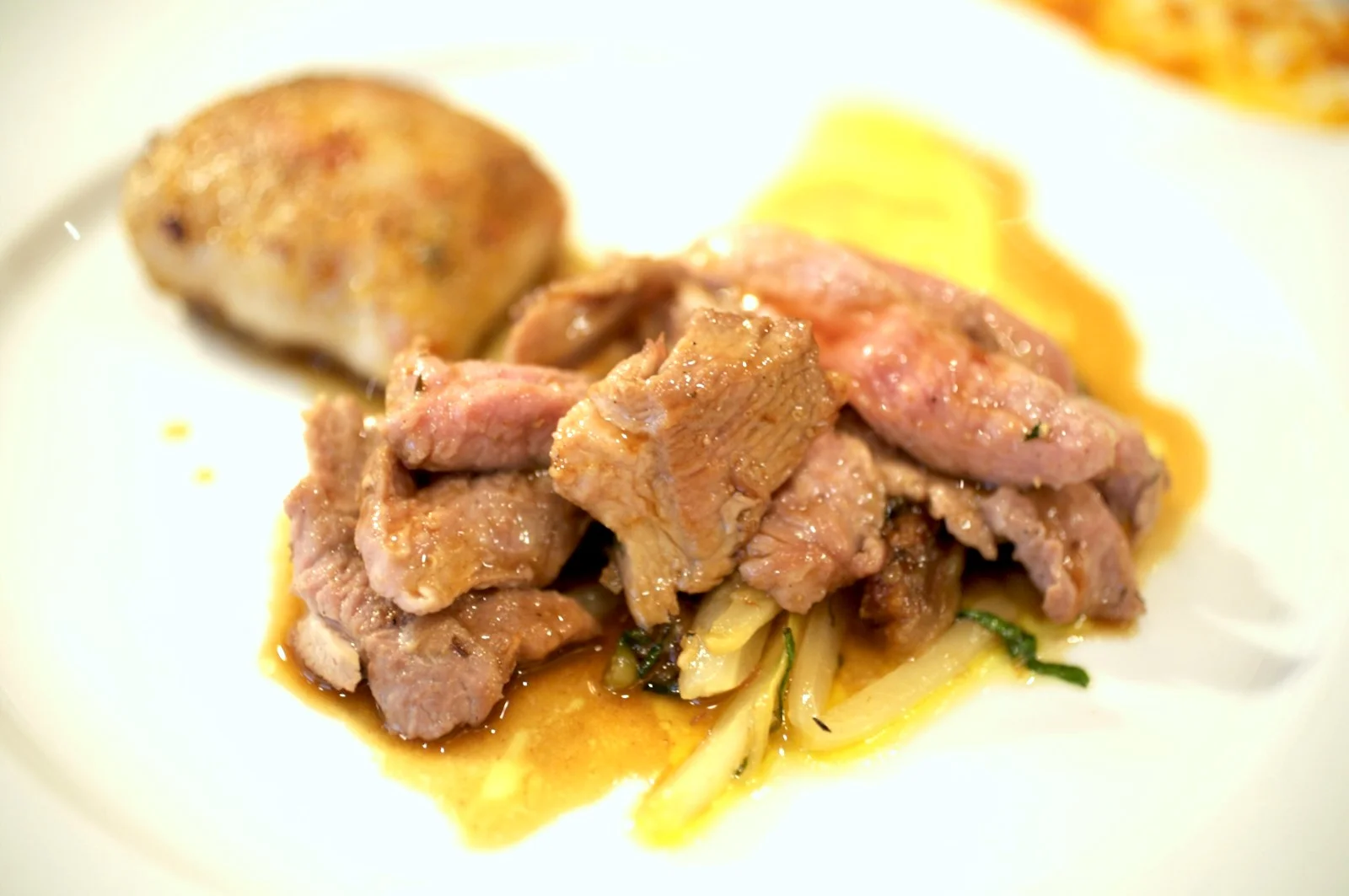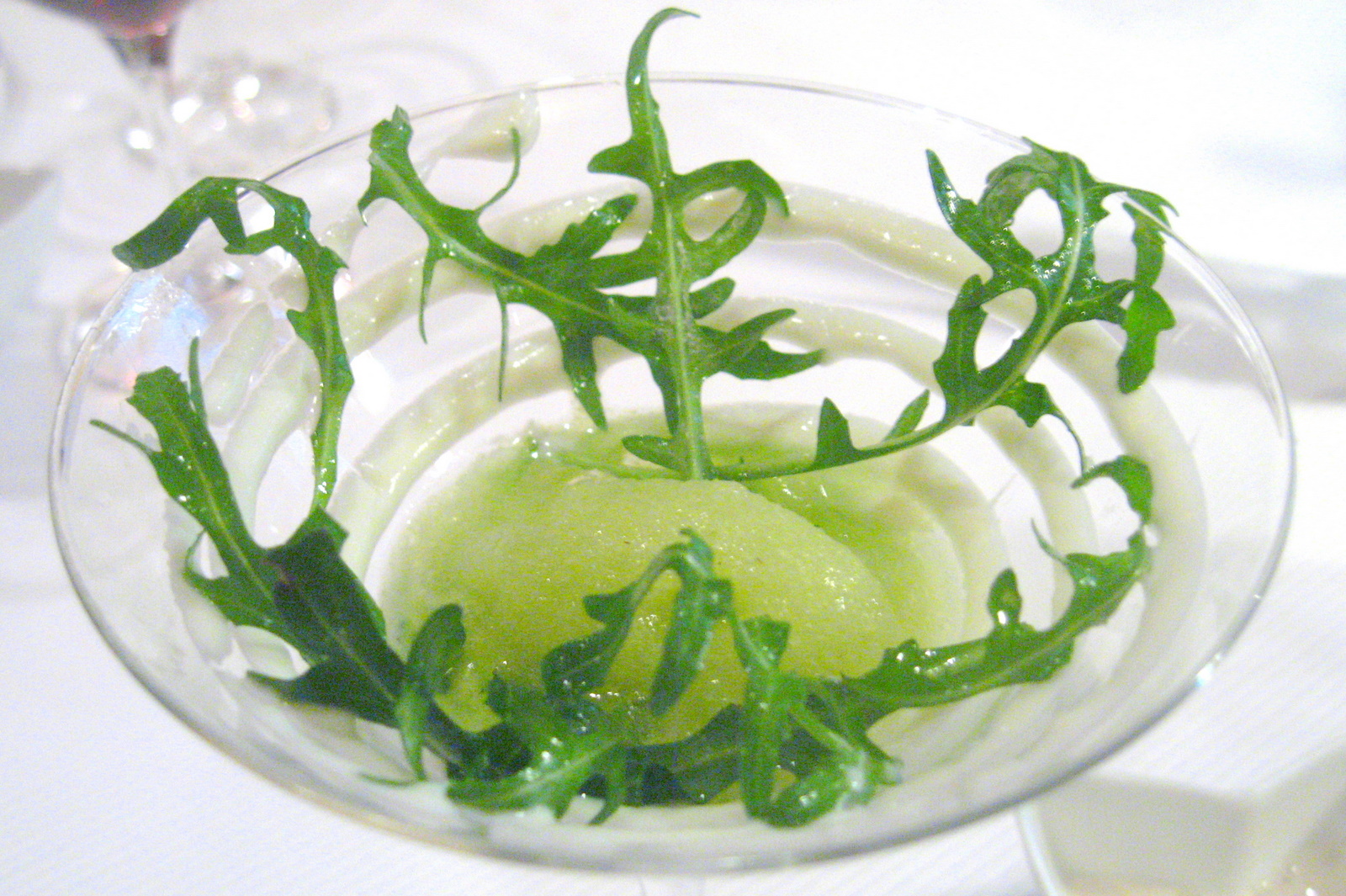Pierre Gagnaire
It seems to be a common theme with Parisian Michelin 3-star restaurants: due to pricing and the general difficulty in obtaining reservations, most are geared towards consistency at the expense of risk-taking. This means that most dishes will be excellent but few will be mind-shatteringly delicious. Lifetime memorable dishes take experimentation, precariousness and uncertainty, three elements embodied by a capricious and whimsical chef. Pierre Gagnaire is one of these colorful chefs. Sure, the restaurant has a menu. But ordering from the menu here is a bit like asking Monet to draw a stick figure: it's restrictive and doesn't take full advantage of the chef's creativity. The best way to experience Chef Gaganaire's cuisine is to ask the kitchen to cook for the table without restriction. At least that's what I'd heard from regulars ... but maybe their last visit was quite some time ago as this is becoming less and less possible since Chef Gagnaire spends less time behind the stove. Apparently this can make the difference between an extraordinary experience and a disappointing one.
I've never experienced his cooking first-hand, unfortunately. During my several visits, Chef Gagnaire was only in the restaurant once and it was for a television interview. Eating at Pierre Gagnaire is like playing the lottery: it takes a whole lot of tries before finally hitting the jackpot, if it ever happens. This is definitely not a restaurant for consistency.
The first time I visited I stuck to the lunch tasting menu. The pan-Asian inspired menu was a little complicated -- but nevertheless fun -- to peruse as Gagnaire's style is a combination of smaller plates and tastes composing a larger dish. Take the amuse bouche, for example:
AUTOUR DES AMUSE-BOUCHES Tartare Terre et Mer, oeufs de saumon organique et feuille de dorade royale. Infusion au vadouvan, râpée de radis et petits coquillages au naturel. Mousseline de Pompadour en persillade, chair d'aubergine à l'origan. Brochette d'escargots petits gris. Moutarde de Shiitake en aigre-doux, pain d'épices croquant et champignons de Paris. Gras de seiche César aux taggiasche ; sorbet d'olive verte de Lucques.
The entire menu was described like this, a general header listing up to ten individual smaller plates.
We paired our meal with a bottle of Domaine J. Confuron-Cotetidot 2002 Gevrey-Chambertin 1er Cru Petite Chapelle, a red Burgundy light in body and full of red fruits.
Our amuses consisted of a combination of spring vegetable stuffed hearts of palm with sprouts, cucumber gelée, and a tuile garnished with herb "paper" and a raspberry confiture. Rather than hitting all aspects of the palate these amuses were one-dimensional and acidic. But I wasn't complaining, I was pretty hungry.
We then received a small piece of soy-glazed eel served with tiny gingerbread cookies. The gentle spice of the gingerbread complemented the salty soy really well; the pasty yet crispy-skinned eel brought everything together. This was delicious.
Next came a rectangular beet tuile laced with anchovy paste, as well as a roasted peanut cornet filled with peanut cream and roasted peanuts. The tuile was fishy, salty, and had a strong briny smell which actually went surprisingly well with the sweet beet helping to tame the fermented ocean flavor. The creamy peanut flavor was focused yet mild much like wet peanut butter with milk.
The amuses continued with beef tartare crowned with salmon roe sitting atop a translucent slice of sea bream carpaccio. The salmon roe was surprisingly salty and lacked the playful "burst" that really fresh ikura has in the mouth. The saltiness was overpowering for the subdued flavors of the meat and fish.
We then had vadouvan jelly with grated radish and small raw shrimp and clams. This was a dish in which the individual components were dull, but the combination more interesting. The crisp of the radish contrasted against the soft shellfish and the vadouvan jelly helped bring everything together with its light acidity.
Lastly came the highlight of the amuses: mousseline de Pompadour. This was a bright green and frothy parsley-flavored mousse heightened with a pinch of garlic covering a bed of juicy grilled snails. Really fantastic.
I would have traded all of these amuses for one spectacular course in a second. The variety was really a lot of fun and prevented palate fatigue, but honestly none of them were that exciting.
Our first official course was sweet-and-sour shiitake mushrooms: a giant wedge of pickled shiitake with a gingerbread tuile and a slice of raw white button mushroom. The mushroom was squeaky and moist, but the overall flavor was acidic and one-dimensional. The gingerbread tuile really didn't do much for this course.
Last came tin strips of cuttlefish with taggiasche olives and Lucques olive sorbet. These olives didn't have the sourness of most pickled olives, rather they were sweet. Their inclusion in the sorbet was particularly interesting as I'd never tasted olives in a sweet frozen form (olive oil, yes, but olives themselves, no). The cold temperature of the sorbet really helped to make the cuttlefish taste fresh and alive, but also muted much of the fish's inherent flavor.
Voile de mortadelle, pétoncles noires au citron vert. Jeunes navets, asperges vertes de Mallemort et brunoise de pomme verte. Bouillon d'asperge - A "veil" of mortadella with tiny black barnacles and lime. This was served with young turnips, a hint of mizuna, and a brunoise of green apple. This was a hodgepodge of flavors that didn't seem to have any coherence but somehow they all came together in the mouth forming a brilliant mixture of salt, earth and cream touched with the light acidity of green apple. This was a pretty exciting course bringing together concepts from Italy and France.
I asked for an additional course off the menu because it sounded really good:
LES LANGOUSTINES En tartare à la mangue verte, feuille de nougatine. Grilleés, beurre fondu relevé de poudre de carcasse. Poêlée à la coriandre fraîche, Sketch up. Bouillon de santé voilé de farine de maïs. Juste écrasées à la spatule, servies sur un toast chips au lard ibérique. En consommé glacé cendré de caroube. En mousseline ; soja frais et pousses de moutarde.
Langoustine tartare with green mango and a thin crisp of nougatine. The mango was shaved thin and served unripe which tempered the sweet langoustine and added a hint of bitterness. It also added a lightly tannic flavor which worked pretty well.
Grilled langoustine with melted butter and a fine powder from the langoustine shell. This was incredible. I'd always liked the flavor of shrimp heads mainly because the shell itself has tremendous flavor, but the shell of langoustine is just too thick and crunchy to eat. Grinding it intensified the salt flavor which made for a fantastic flavor-enriching addition to this dish. The light cooking left the stringy and pasty texture in-tact, a testament to the shellfish's freshness. This langoustine was incredibly juicy. I only wish I had a few more of these.
Next came an acidic version of the langoustine, sautéed with cilantro and diced tomatoes. The cilantro brightened the cooked langoustines and the taste very fresh, much like a Mexican pico de gallo.
"Healthy broth" with a veil of cornmeal. A tribute to the 200-year-old recipe in The French Cook by Louis Eustache Ude. Light, creamy, and muted in flavor.
Next came ground bits of langoustine on a thin layer of toasted garnished with a slice of Jamon Iberico. The fattiness of the ham complimented the soft langoustine while the toast added textural contrast. The addition of the salty meat really brought out the flavor of the shellfish in a different light.
Then came a jellied langoustine consommé with carob powder. The langoustine jelly had a sublte flavor that somehow lasted long after each bite. The flavor of the jelly was sharp and intense balanced by the hint of chocolate coming from the carob powder.
Last came a mousseline of langoustine with soy bean sprouts and baby mustard leaves. The mustard leaves added a vegetal bitterness that contrasted against the sweet langoustine.
LE PLAT PRINCIPAL Gigot d'agneau de lait rôti au colombo, taillé en fines tranches, servi sur une poêlée de blettes aux panoufles. Caillette de légumes de printemps. Tarte sablée de gousses d'ail, pâte de pruneaux.
Thin slices of milk-fed suckling lamb roasted with colombo spice blend, served with sautéed swiss chard and pieces of lamb sirloin. This was pretty awful. The gamey meat was overcooked and its flavor too similar to a quick stir-fry.
The other parts of the dish were equally offensive: meat's curry spicing just didn't work.
LE CANARD Petit canard Pékin rôti entier à l'étouffée, aux aromatiques : Les filets sont taillés en petits pavés ; carottes multicolores ; feuille de datte sèche aux mûres. Scarole, parfait glacé de brebis et sirop de pétales de coquelicot. Betterave rouge comme un condiment.
Another supplemental dish that came from the regular menu. This, quite frankly, may have been my favorite dish of the year. A whole small Peking duck sizzling with dates, blackberries and a bitter chocolate sauce. The acidity of the fruits cut through the duck's fatty mouthfeel and really brought out its natural flavor. The skin was roasted to a light crisp making it more like flavorful chip that added crunch to the dish's softness. This was truly balanced in every way, and remarkably, each bite got better and better. Served to the side were a few pieces of escarole with frozen blue sheep's milk cheese parfait and poppy petal syrup. This course really highlighted for me the potential of chef Gagnaire's cooking: when he hits, he hits big.
Next came a few desserts ... ten to be exact.
LE GRAND DESSERT DE PIERRE GAGNAIRE Neuf desserts Inspirés de la pâtisserie française ; élaborés à partir de fruits de saison, de confiseries peu sucrées & de chocolat.
We started with an "acid drop," a thin-shelled candy filled with dehydrated strawberry powder and citric acid. Then followed an almond meringue with marzipan, a piece of dark chocolate with kirsch, a black currant wrapped with marzipan and glazed in the shape of a cherry, white chocolate with lemon curd, and a "marshmallow rope." Technically speaking these were all petits fours and were not included as part of the dessert. The acid drop was our favorite as it exploded in the mouth like pop rocks.
The official dessert came next. First was coconut and vanilla tapioca with toasted coconut, pistachio ice cream and red bell pepper. This was a combination that just didn't work. Maybe this is because I don't like bell pepper but its sweetness in particular just wasn't appealing, sort of like sour caramel.
More desserts included a lemon-almond ice cream with almond gelée and a red bell pepper stuffed with dried fruit. Again more red bell pepper; I wasn't a fan.
Next came vanilla ice cream in a white chocolate shell with white beer foam and a strawberry purée. This had all the sweetness of barley without the alcohol, something that worked really nicely as a foam. The texture of the foam was more like a lather, thick and creamy.
Gentle flavors followed: cucumber sorbet, cucumber gelée, and arugula. This was cool and refreshing lacking the acidic bite most sorbets have. I didn't really like the flavor, but I liked how it soothed my mouth with a gentle hint of cucumber.
Next came lots of bright citrus with a sharp acidity: almond cake with lemon confit, caramelized sugar shell, and papaya-lime purée. Orange and kumquat confit, orange sorbet, orange mousse served on top of orange toast. And finally lemon sorbet, lemon confit covering a bowl of shaved pineapple. All the desserts were concentrated and sweet.
Wrapping up the meal was a raspberry meringue with chantilly and raspberry confiture atop a fresh mango tart. This was creamy with a slight crunch. Lastly, a dark chocolate ganache with chocolate straw and praline tuiles.
Nearly half of our official meal was desserts; it was definitely intense. As my friend Peter says, "wow 'em with the desserts and they'll quickly forget about the meal." At the end of this meal I was definitely confused. Some of the dishes were inspired genius yet the others, a total mess. It's almost like trying to create art by throwing paint at a wall: most of the time it's just a mess but once in awhile it gives birth to greatness, or at least it did for Jackson Pollack. And it definitely takes a few risks and some experimentation to discover great dishes, but this was just too much. It's a delicate balance between calculated risk and experimentation versus haphazardness. This was a complete roller-coaster ride and it wasn't exactly fun. Some of the dips were just too steep and the rest was kind of flat. Two or three courses were absolutely exceptional, but this was no where close to compensate for the lows.
This sentiment has been pretty consistent among my visits. So why do I keep going back? In the back of my mind there is the hope that the slot machine will stop in my favor, that this could potentially be the highlight meal of my life. I just haven't won yet. Maybe if I roll the dice one more time I'll win.











